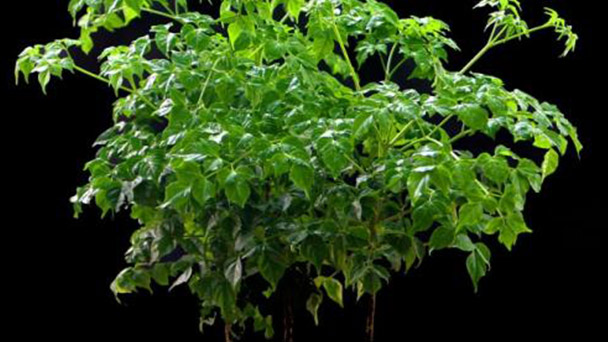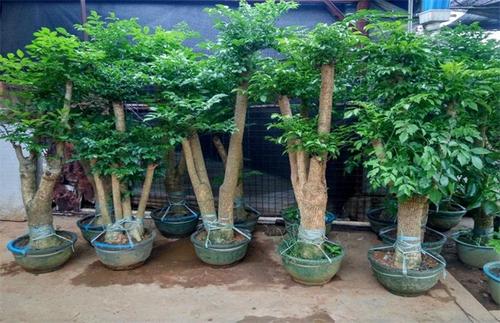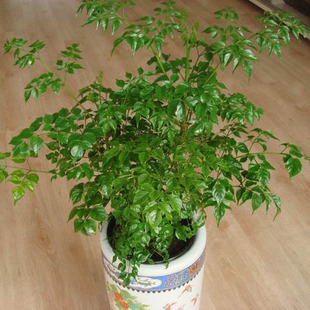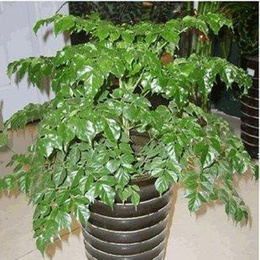Radermachera Sinica caring tips
Written by Maggie
Dec 25 2020

When you grow Radermachera Sinica, you are likely to experience leaf wilting and crimping. Some flower lovers do not know what to do about the Radermachera sinica leaf wilting and crimping, which is generally relieved except for the root rot caused by fertilization. The following are some caring tips for growing Radermachera Sinica.

How to care for Radermachera Sinica leaf wilting
1. Control the amount of water
[Overwatering] : radermachera sinica leaves will wilt if they are chronically wet. If you water too much, take it out of the pot, put it in a place with scattered light and ventilation, and dry the soil as quickly as possible before you can replant it.
Drought and dehydration: The radermachera Sinica leaves will wilt if the plant is not watered for a long time. In addition to watering the plants, you need to spray water all over the tree to keep the Radermachera Sinica moist, and then it will recover, but don't be too quick to let the soil water.
2. The temperature is suitable
Radermachera Sinica likes to grow in warm places and does not tolerate cold. In winter, when the temperature is below 5℃, frostbite may occur, and then a deciduous leaf freezing situation. At this point, the Radermachera Sinica needs to be moved to a warm place, preferably with air conditioning, where the temperature is above 8℃.
3. Quantitative fertilization
Unreasonable topdressing can easily cause irreversible damage to plants, and if applied too much, Radermachera Sinica will burn its roots and rot, naturally causing the leaves to wilt. And once the damage is done, it's basically irreparable. If too much is applied, water and dilute immediately and let dry the soil.
4, Keep humid and ventilated environments
Radermachera Sinica likes places with high humidity. If kept in a hot, dry place for a long time, it will lose water quickly, so the leaves will wither easily. We need to spray water to the leaf right now, root proper watering, transplant it to a cool ventilated humid place.

How to caring for Radermachera Sinica leaves crimping
The Radermachera Sinica, which has been bought and kept for less than a week, has a constant problem with curled leaves. Flower lovers are starting to worry about the Radermachera Sinica leaf curl problem, but there are a few things you can do to avoid it perfectly.
1. Suitable environment
The Radermachera Sinica, just bought from the mall, is used to the moist air inside the canopy. When one comes home, he cannot take care of it because he lacks the relevant knowledge of plants. Two extreme changes in the environment will have a great impact on him, so the leaves begin to shrink and curly. If it is not taken seriously and cared for at this time, your Radermachera Sinica may die.
What to do: Keep it near the bathroom. If it's too dry, turn on the humidifier. You can avoid the Radermachera Sinica problem by pouring more water on the leaves and spraying them with a little water.
2. Water properly
Radermachera Sinica is a very warm and moist plant, and if it doesn't meet its water needs, it will curl its leaves down. Plants use a lot of water during the day to photosynthesize, and they lose water during hot weather due to transpiration. You can also see that the soil gets cracked and starts to water a lot and that causes the root system of the plant to suffocate and that has a direct impact on the Radermachera sinica leaf curl.
Treatment method: Abide by the principle of watering. Do not wait for the soil to be all dry, just water. We cannot spray water above the leaf, and we cannot regular ration water. Water all at once, until you see the drain drain out.If the soil is already dry, choose to water it slowly in the morning or evening.
3. Air circulation
The Radermachera Sinica leaves curl up and a big part of the reason for that is because the air is not flowing, the Radermachera Sinica gets stuck in there and can't breathe, and becomes weak. Ventilation is not a matter of opening a single window. It requires a constant flow of fresh air, especially in the hot summer when Radermachera sinica leaves are bending and drooping.
What to do: Move the Radermachera Sinica to a balcony in mild weather in spring and autumn, sprinkle water on the leaves if the outside is too dry, and keep it indoors in summer, with good ventilation and not too high indoor temperature. Keep the Radermachera Sinica indoors somewhere warm in the winter so you don't have to worry about Radermachera sinica leaves curling up.
4. Light intensity
All green plants have to photosynthesize to be able to support life, and there's no way that Radermachera Sinica can photosynthesize effectively if it's kept in a closed room all the time. The Radermachera Sinica, though shade tolerant, cannot be left out of the sun for long periods of time, which can cause the leaves to turn yellow and curl inside and then sag or fall out.
What to do: You can buy an incandescent lamp to illuminate the Radermachera Sinica for 10 hours during the day, with the base constantly changing during the irradiation process to ensure that each leaf is able to photosynthesize. Then there is the Radermachera Sinica, which is moved to the balcony on a clear day, and the need to turn the tub when the sun is shining outside. Never move out of the house at noon.
5. Fertilize appropriately
Any plant can no longer maintain upright posture under the circumstances of insufficient nutrition, malnutrition, of course, there is no way to make the green leaves straight. But too much can have side effects. Some people even fertilize carelessly, which leads to the phenomenon of burning roots. Severe water loss at the root will make the root unable to absorb nutrients, which will also cause the bending and sagging of leaves.
Solution: Do not apply too much fertilizer with a moderate PH, such as sauce dreds or bean cake fertilizer, and do not use any organic fertilizer until it is completely rotten and ripe. Do not apply large amounts of fertilizer, but put it in a well-ventilated place with moist air after application.

Latest Updated
- Benefits of Bugleweed - 7 Science-backed Health Benefits
- Bugleweed Dangers & Side Effects - Is It Poisonous?
- How to Plant Evergreen Trees - What You Should Know
- When to Plant Evergreens - Grow Guide for Evergreen Trees
- 12 Wonderful Evergreen Shrubs for Your Garden
- 12 Popular Evergreen Plants with Pictures for Beginners
- When And How To Prune A Lilac Bush Like a Pro
- How to Grow & Care for Lilac Vine (Hardenbergia Violacea)
- Japanese Lilac Tree (Syringa Reticulata) Care & Propagation Guide
- Shumard Oak Pros and Cons - What to Know
Popular Articles
- Winter maintenance of Antirrhinum Majus
- How to Grow Terminalia Mantaly Tree
- How to Grow and Care for Crossostephium Chinense
- How to grow Antirrhinum Majus in spring
- Peristeria Elata (Dove Orchid) Profile: Info & Care Guide
- Underwatered Snake Plant (Sansevieria Trifasciata) - Signs And How To Fix
- How to Care for Brazilian Jasmine Plant (Mandevilla Sanderi)
- How to Grow & Care for Graptopetalum Purple Delight in Summer
- Rosa Chinensis (China Rose): Plant Growing & Care Tips
- How to Care for Baby Sun Rose (Aptenia Cordifolia)